SPA-DEは
Tokyoで編集する世界の商空間デザイン誌です。
SPA-DE is
a Tokyo-based magazine specializing in Commercial Space Designs in the world.
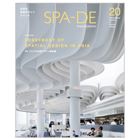
vol.20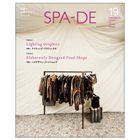
vol.19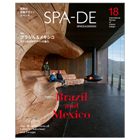
vol.18
vol.17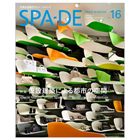
vol.16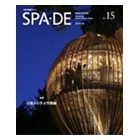
vol.15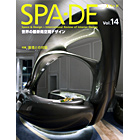
vol.14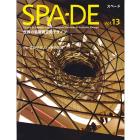
vol.13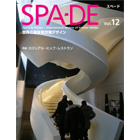
vol.12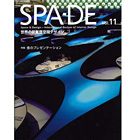
vol.11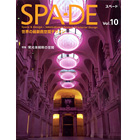
vol.10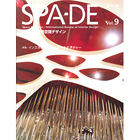
vol.9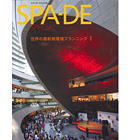
SPECIAL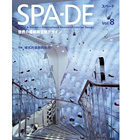
vol.8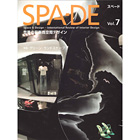
vol.7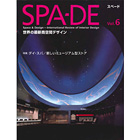
vol.6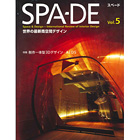
vol.5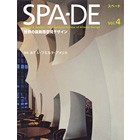
vol.4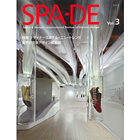
vol.3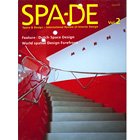
vol.2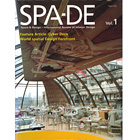
vol.1
- 「SPA-DE(スペード)」休刊のお知らせ
- 毎年、5月と11月に発売しておりました「SPA-DE(スペード)」ですが、
残念ながら、2013年11月発売の「創刊10周年号SPA-DE vol.20」をもちまして
一時休刊とさせていただくこととなりました。
「SPA-DE(スペード)」を長年ご愛好いただきまして、誠にありがとうございました。
SPA-DEのコンセプト
【第三メディア=空間デザイン】
最近よく耳にしますが、「空間デザイン」ほど曖昧な概念はありません。
他のジャンルを見渡しても、都市デザイン、建築デザイン、インテリアデザイン、プロダクトデザイン、ファッションデザイン等々
どれも対象がはっきりして専門化されています。
しかし、現代生活において私たちが実際に接して、そこから感動や心地よさを体験し、情報を得ているデザイン的なものとは何かと考えてみよう。
それは多種多様なジャンルが、ある「場」の中で統合された「関係」そのものであり、
その中で起こるヒトとモノのコミュニケーションであることに気づきます。
デザインとは単独の処方箋ではなく、一つながりの問題解決策なのです。
そうした意味で今日、「空間デザイン」ほどデザインというものがトータルな力を発揮するジャンルもないといえます。
「空間デザイン」の代表格は商空間です。
人々の新しい価値観や欲望を捉え、建築家、インテリアデザイナー、グラフィックデザイナー、
そして企業家やプランナー、フードコーディネーターなどがコラボレーションして一個の装置としてのデザイン複合体を創り上げていきます。
扱う対象だけみるとインテリアデザインに近いかもしれませんが、
商空間デザインはより包括的な第三のデザインメディアともいえる概念なのです。
SPA-DEが扱う空間デザインはこのような広い意味での商空間であり、
レストラン、カフェ、バー、ファッションブティック、リテールストア、ショールームなどを始めとしてオフィス、ミュージアム、
さらにはインスタレーションや都市デザインまで、現代の都市生活者が日々接する場のデザインが取材対象となります。
SPA-DEのの唯一のフィルターは、それが創作のスリルに満ちているかどうかです。
SPA-DEはトレンドよりも、トレンドを生み出す動向に関心を向けています。
【国際基準と極東発】
美やデザインの基準に関して西洋と東洋が影響を与えあうという構図はすでに何世紀も続いています。
このような文化やデザインのクロスオーバーな状況がIT革命によってさらに大きな変貌を遂げたのは周知のとおりです。
こうしたデザインを取り巻く、大きな枠組みへの絶えざるシフトは、これまでの国内向けだったデザインの評価基準の変更を迫ると同時に、
ローカルなモノに新しいチャンスを与えることにもなりつつあるといっていいでしょう。
SPA-DEは新しい世界基準で「世界の空間デザイン」を捉えて紹介していくとともに、
デザインブロックとしての「極東」を念頭に置いて、世界に対してローカルなものも発信していきたいと考えます。
- The book "SPA-DE" is stops issuing.
- The "SPA-DE" was being sold in May and November every year.
But "SPA-DE vol.20" sold in November, 2013 is The last number.
We were very sorry, but for a while, we stopped the issue of "SPA-DE".
Thank you very much for loving to read "SPA-DE" for a long time.
Concept of SPA-DE
【A Third Medium = Spatial Design】
We often hear the term "Space Design" or "Spatial Design" these days. But its definition is ambiguous. An overview on other genres of design such as urban design, architecture design, interior design, product design, fashion design and so on would clearly suggest the objects of specialized design. But what about Space Design?
Just think about places you spend time at carrying out your activities where you feel comfortable or impressed and where you are also obtaining necessary information. From a design viewpoint, you will notice that in these places, designs of different genres are integrated and that they present a "relation" to facilitate communication between humans and objects. Designing such spaces is not a prescription from a single genre but a concerted solution of connected genres. In this sense, there is no other design genre today than Spatial Design in which designers of different genres can come together and display their competence in total.
The most representative aspect of Spatial Design is Commercial Space Design. Upon grasping new values and desires of consumers, an architect, an interior designer, a graphic designer, an entrepreneur, a planner, a food coordinator and others collaborate in developing a commercial complex, which is actually a design complex. Looking at individual shops inside a complex, one may be more concerned about interior design, but commercial space design is a more inclusive concept, which may be defined as the third design medium.
The space designs that SPA-DE deals with are commercial spaces in a broad sense as mentioned above. The objects covered in the book are all spaces that contemporary city residents come across in their daily activities ranging from restaurants, cafes, bars, fashion boutiques, retail stores, show-rooms to offices, museums and further to installations and urban designs.
The only filter for SPA-DE to select space designs for inclusion in this book is whether a work is filled with thrilling creativity. SPA-DE is more interested in the underlying movement that creates trends rather than trends themselves.
【International Design Criteria and Designs in Far East Countries】
For centuries, the west and the east have been interacted and influenced in art and design. It is widely known that this crossing over of culture and design has come through a great change because of the revolutionary advancement of information technology. Continuous shifts to greater frameworks of design have forced changes in the criteria of design value which had been directed toward the sphere of domestic design, and at the same time, will give new opportunities for local designs to be presented internationally.
体裁/A4判変型 ソフトカバー・ジャケット装 約168ページ 定価/2,500円~3,200円+税
発行形態/年2回刊(5月、11月) 全国書店販売
SPA-DE Specifications
Format: 303mm x 223mm (Vol.1-Vol.14、SPECIAL) 285mm x 223mm (Vol.15-), casebound with a jacket, about 168 pages
Text: English and Japanese
Illustrations in full color
Biannual publication in May and December
発売所 株式会社六耀社 〒160-0022 東京都新宿区新宿2-19-12 静岡銀行ビル
TEL 03-3354-4020 FAX 03-3352-3106
*2014年12月より移転
新住所 〒136-0082 東京都江東区新木場2-2-1
TEL 03-5569-5491 FAX 03-5569-5824
発行所 有限会社ファーイースト・デザイン・エディターズ
〒160-0023 東京都新宿区西新宿3-5-3 西新宿ダイヤモンドパレス217号
TEL 03-6279-4544 FAX 03-6279-4663
Producer: Rikuyosha.Co.,Ltd. 2-2-1, Shinkiba, Koutou-ku, Tokyo, JAPAN Postal Code 136-0082
Publisher:Fareast Design Editors Inc.
#217,3-5-3 Nish-shinjuku, Shinjuku-ku, Tokyo, JAPAN Postal Code 160-0023


